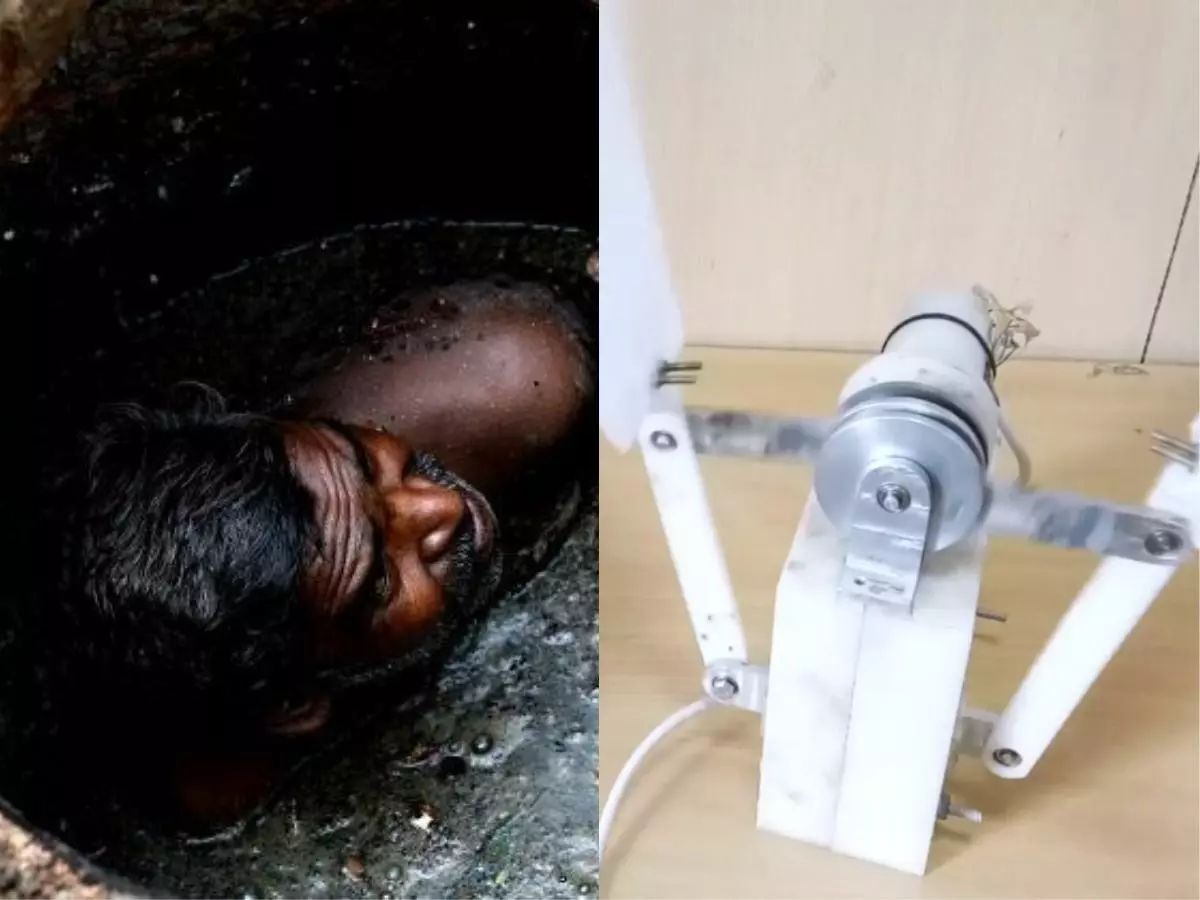IIT Madras Students Build Robot To Clean Sewage Tanks, And Save Lives Of Sewage Cleaners
Cleaning sewer lines and manholes is a much more dangerous job in India than most other countries in the world. That¡¯s because we don¡¯t have any efficient ways to do this, but instead rely on workers manually cleaning waste in dangerous situations.

Cleaning sewer lines and manholes is a much more dangerous job in India than most other countries in the world.
That's because we don't have any efficient ways to do this, but instead rely on human workers manually cleaning out waste in dangerous situations.

It's estimated that around 8,00,000 people from lower-income groups are employed as sewage cleaners, and approximately 23,000 of them die every year. These labourers are sent into sewage lines with no safety gear, causing them to eventually perish due to asphyxiation, or complications from the poisonous gases present.
Now, a group of students from IIT-Madras are hoping to save the lives of these workers by automating the process. Called the 'SEPoy Septic Tank Robot', it will undergo lab trials starting next month, with trials in real sewers scheduled for July. If the robot is indeed successful, perhaps it'll even be adopted for use by state governments.

The Bandicoot by GenRobotics
SEPoy is in fact inspired by a similar robot that debuted last year, the Bandicoot. A product of GenRobotics in Kerala, the robot has a universal arm capable of grabbing the waste and a container to store it in to be lifted out of the manhole and emptied.
With machine vision, Bandicoot is able to parse its surroundings and let a human operator outside the manhole effectively control it.
For SEPoy however, the students instead opted for a smaller bot they wanted to be able to move through the waste. Though the liquid on top can be easily pumped out, it's the lower layer of sludge that human workers are usually sent in to clean.

SEPoy from IIT Madras
To design a robot capable of moving through this, the students had to get creative. A simple rotary propeller would quickly become ineffective in the thick sludge, so they instead opted for a bio-inspired six-fin propeller. SEPoy also has cutting tools that destabilize the sludge as it swims through it, allowing it to pumped out by a tanker. These are retractable, allowing the robot to fit into a manhole opening.
The team is currently in talks with the Safai Karamchari Andolan (SKA) for a possible partnership. Though the current device is still technically in prototype stage, they hope to have a final product within a year. Reportedly, the Telangana government has already agreed to adopt it if it passes trials.
There are problems to deal with along the way however. Robots to clean sewers may not have to worry about toxic fumes, but they need to be spark-proof, sealed to liquids, have the ability to move around, and some sort of wireless communication system. All of this drives up the cost, with the SEPoy also estimated to cost around Rs 10-30 lakh
Eventually, we'll need to apply advanced robotic techniques to build cheaper automatons capable of replacing human sewage cleaners, if we want to save lives.
